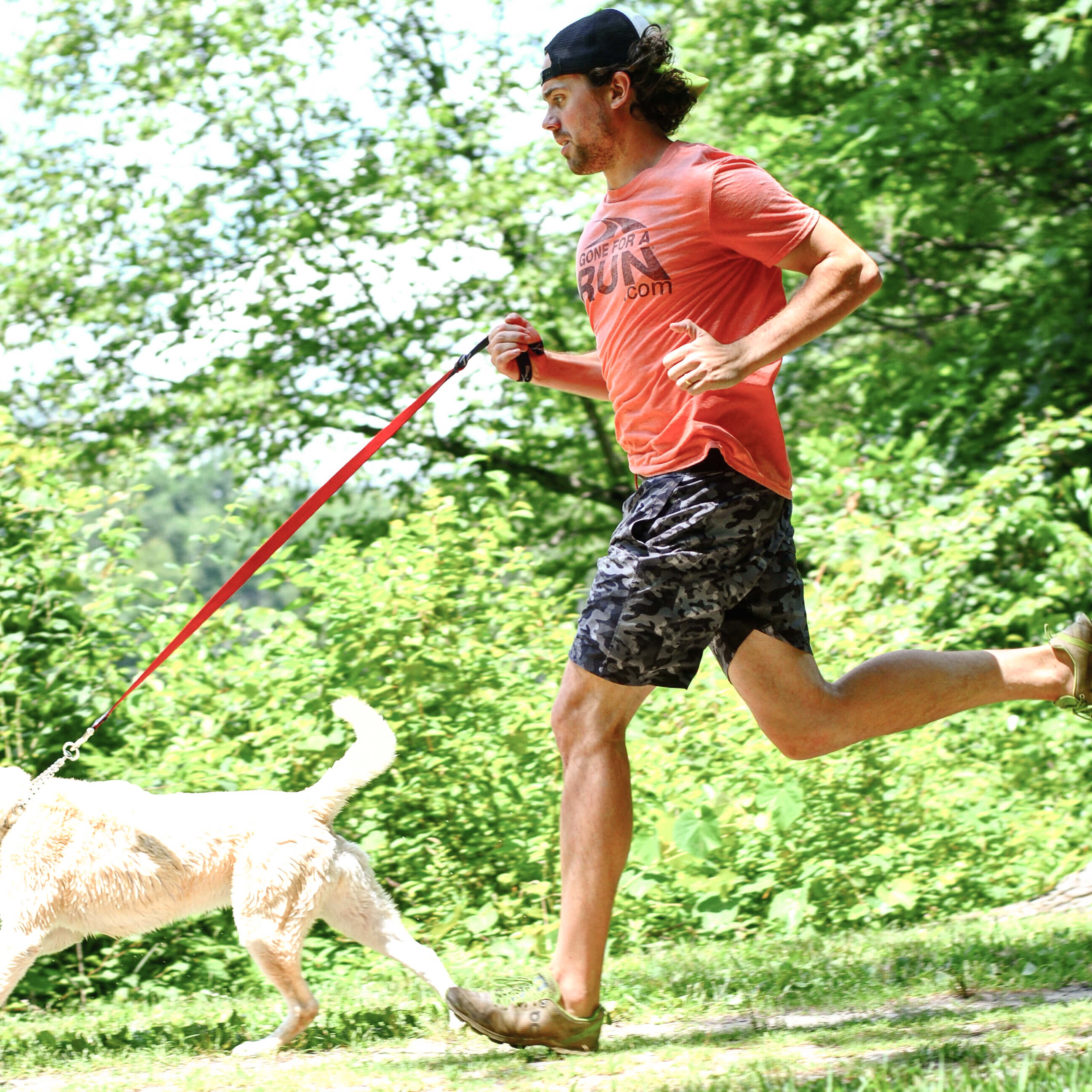ONLY $5.99 Shipping: Flat Rate Economy Shipping*
Free Shipping: Free Economy Shipping is available on orders over $100*
* Free Shipping is only available to valid addresses located in the contiguous U.S.
* Some exceptions apply
Come, run along with us as we share our joy of everything running.
Whether you are a seasoned runner or a novice, have a dog or are thinking about adopting one, running with your dog will add to the joy of running.

Running with your dog benefits both you and your dog. You know why you run, but did you know that your four-legged friend can reap the same rewards?
Most dogs love to run, but some breeds are naturally better suited to longer distances than others. In general, working dogs and dogs that are bred to run are ideal, while flat-nosed dogs such as pugs and bulldogs tend to overheat and should stick to running around the dog park. If you don’t already have a dog and are searching for your new running partner, consider a breed best-suited to your style of running:
And don’t forget to look at your local shelter. You can find pure breeds there, but mixed breeds with any of these in its DNA can make an ideal running partner.
No matter the breed or how long you have had your dog, take your furry friend to the veterinarian before starting a running program. If your dog is too young, too old, or has an underlying health issue, running could do more harm than good. Your vet can also advise you on the best program for your dog to gradually increase endurance and avoid injury from doing too much too soon.
Once your dog gets the go-ahead, be sure that it is leash-trained and knows basic commands. For both your safety and your dog’s, you don’t want it darting into the middle of the street into the path of an oncoming car. Dogs who have good walking manners will transition easily to running. Some dogs are natural pullers, so training it to stay next to you is important. Although your dog might be king of the castle at home, it is your responsibility to be the leader of the pack when you are out on the road.
When choosing where and when to run, remember these points:
Unless you are running in a contained area, it is best to run with your dog on a leash since even the most well-behaved dog can suddenly take off after that squirrel! To keep your hands free (so you can carry that bottle of water for your pooch), try a hands-free leash. The Gone For A Run Hands-Free Dog Leash features an adjustable waist belt with a quick-release buckle, a swivel hook to prevent the leash from intertwining, a bungie section to absorb shock when your friend is pulling, and two handles to quickly grab when needed to control your dog. The “hand-free” experience can enhance the safety and quality of your run for both you and your canine partner.
Still not sure about the joy of running with your dog? Elizabeth Morgan and her rescue dog Bella will convince you otherwise. A runner for 15 years, Elizabeth needed something to refresh her routine. She heard about the benefits of having a furry running partner, and after researching breeds went to her local Humane Society where she was instantly smitten with a black lab, Bella. Finding a forever home for Bella had been a challenge for the shelter since she was an extremely high-energy dog – which made her perfect for Elizabeth! Bella (and Elizabeth) have a full race calendar of 5Ks, half-marathons and even a full marathon. Elizabeth and Bella have started the Run Bella Run campaign to increase awareness for animal shelters and rescue dogs, and to raise money for the Humane Society where Bella was adopted. Gone For A Run is honored to support this campaign, and 20% of the price of every item purchased from the Running With Your Dog category using the code RUNBELLARUN is donated to this very worthy cause.
So, lace-up, leash-up and get out there with your new running partner! You will both be happier and healthier for it.